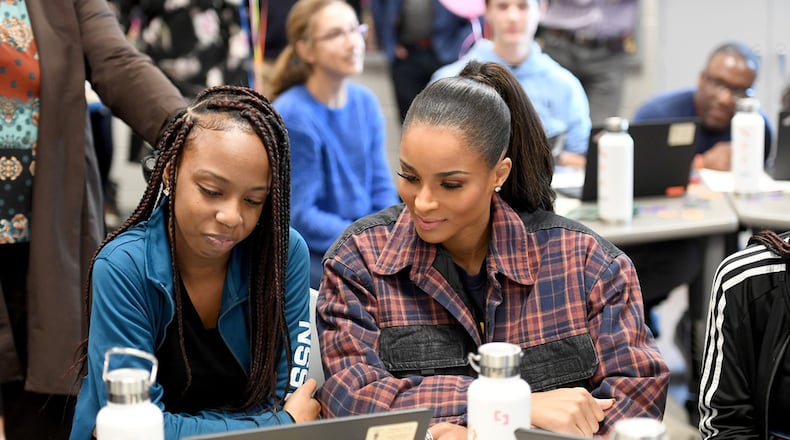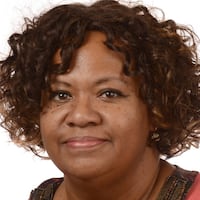Just because your teens watch movies and play video games on their phones and would rather communicate through social media than in person, doesn’t mean they are up-to-date on work-world technology.
With the Bureau of Labor Statistics estimating that by next year there will be 1.4 million computer-science-related jobs available and only 400,000 graduates with the skills to apply for those jobs, many schools are readying the next generation to fulfill that need.
Computer science students at Paul Duke STEM High School recently showcased some new skills in a competition that teaches how to write code that makes music.
Related story: Even in social studies, English, students keep up to data
Related story: High schoolers give engineering savvy real-world test
Related story: Arts education teaches more than painting, music, dance
Using Georgia Tech’s learn-to-code-through-music platform, EarSketch, high school students have the opportunity to win prizes by composing an original remix featuring the song “SET” from Grammy-Award winning singer-songwriter Ciara. The competition is intended to get young people excited about computer science and coding.
High school students across the country can enter the competition through Jan. 20.
“I always get students who come in and say they don’t know anything about programming and they may be a little intimidated at first,” said Philip Peavey, digital technology teacher at Paul Duke. “But once they get going they realize that it’s something they can do … it opens their eyes to career possibilities that they maybe hadn’t thought of before.”
Computer science is the fastest-growing profession in science, technology, engineering and math (STEM) but only 8 percent of STEM graduates earn a computer science degree, with a small percentage from underserved backgrounds.
The competition is the latest addition to the Amazon Future Engineer program.
“Learning these skills now will help you be prepared for a university setting,” said Kenneth Knight, an executive at Amazon. “This program is really about making the experience less intimidating and getting students exposed to high-level skills.”
In multiple research studies, students using EarSketch significantly increased their positive attitudes toward computing, especially students from groups historically underrepresented in the field. Girls expressed greater gains in computing confidence and motivation than boys.
Cedreice Allen wasn’t sure programming was her thing, at first.
“I’m really good at math and science so I’m going to need to know how to do this in whatever field I choose,” she said. She’s not sure if music is her ultimate goal, but is glad that something fun got her in the door.
“I’d probably do this as a hobby if I didn’t do it for a living,” she said.
But her twin sister Kadrese Allen has been bitten.
“This is something I can see myself doing in the future,” she said. “I love music, I love technology and this is something that really speaks to me.”
Contest prizes include all-expenses-paid trips to Amazon’s Seattle headquarters, PreSonus Audiobox 96 Studios, and Amazon gift cards.
“Music and coding are both highly prevalent today, but coding is less apparent. EarSketch provides an amazing way to experience these creative disciplines simultaneously,” said Roxanne Moore, senior research engineer at Georgia Tech and project lead for the remix competition.
More than 375,000 students in all 50 states and over 100 countries have used EarSketch.
Information: www.amazonfutureengineer.com/earsketch
About Amazon Future Engineer program
Launched in November 2018, Amazon Future Engineer is a four-part childhood-to-career program intended to entice students from underrepresented and underserved communities to careers in computer science. Each year it provides over 100,000 young people in over 2,000 high schools access to Intro or AP Computer Science courses; awards 100 students with four-year $10,000 scholarships, and offers guaranteed and paid Amazon internships. In addition, Amazon Future Engineer has donated more than $10 million to organizations that promote computer science/STEM education across the country.
About the Author
The Latest
Featured



